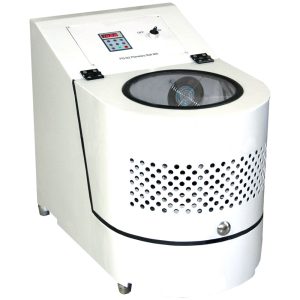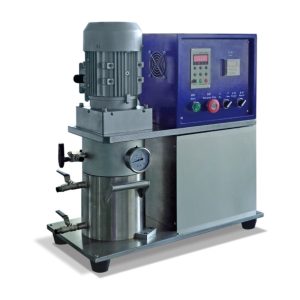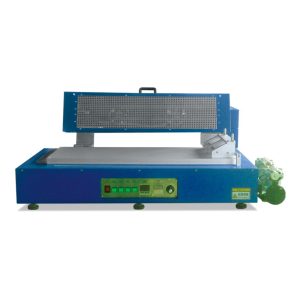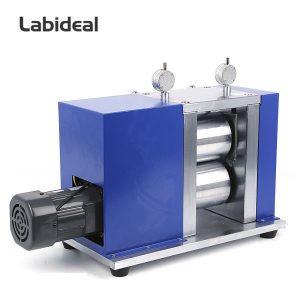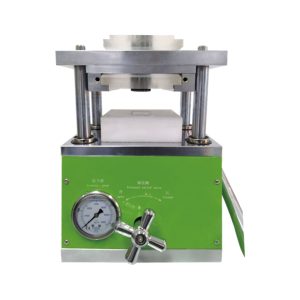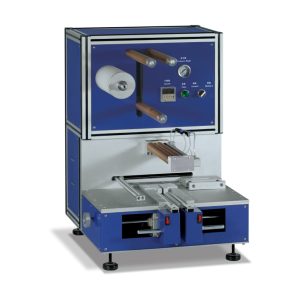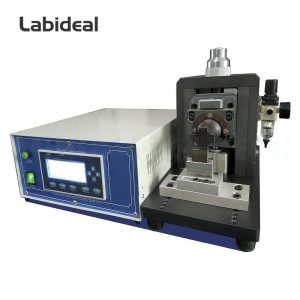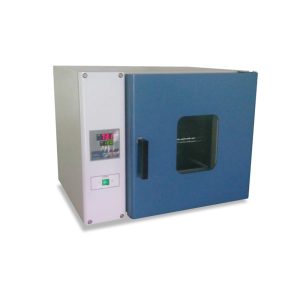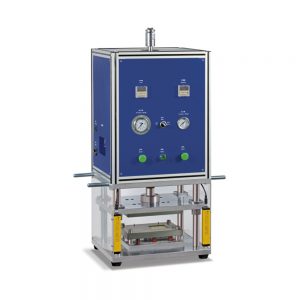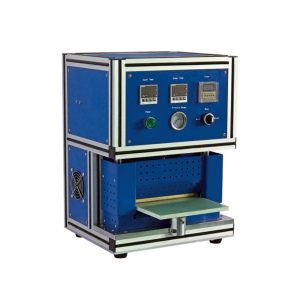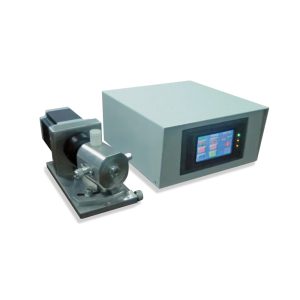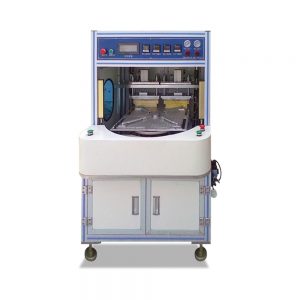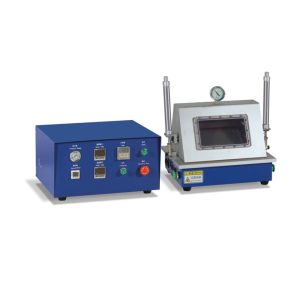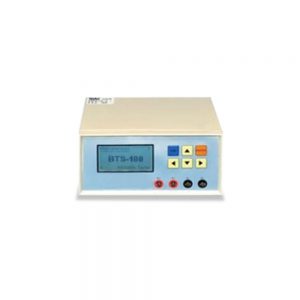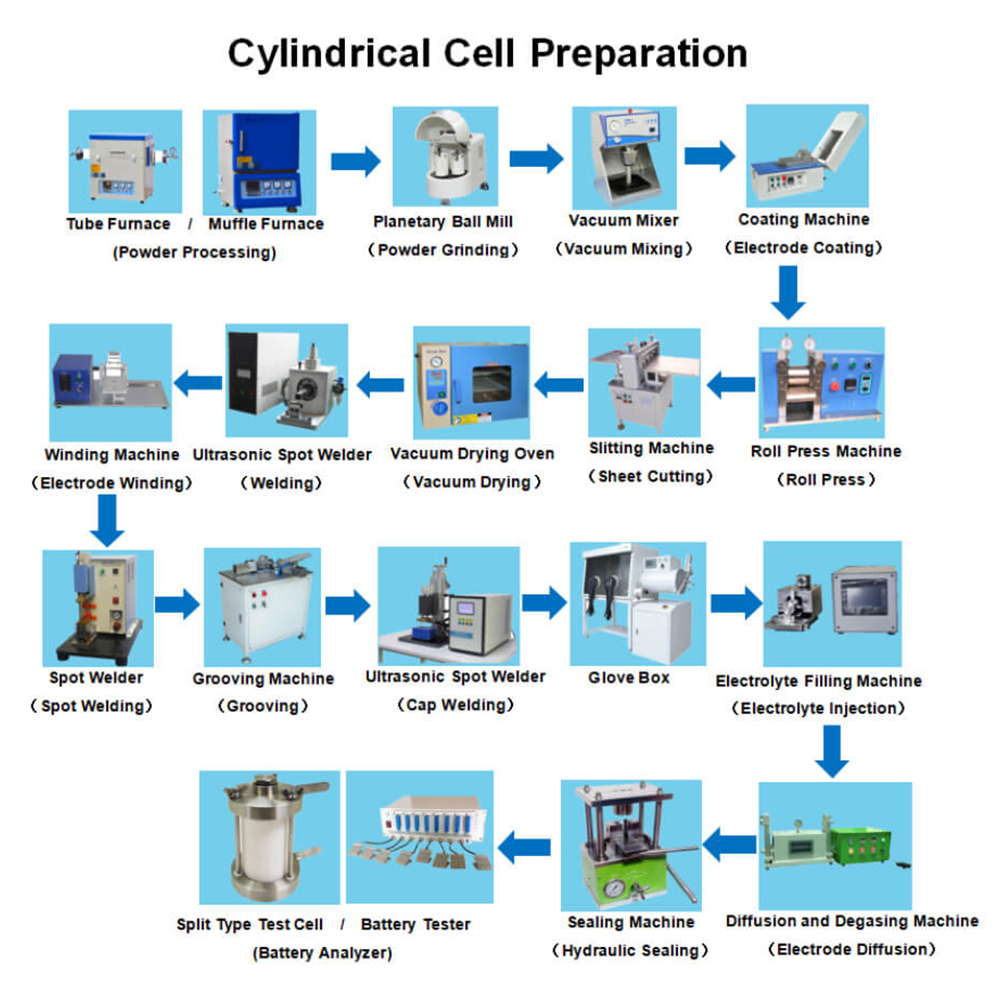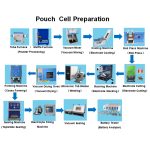
How to Make Pouch Cell
SaveSavedRemoved 1
Deal Score+1
Step 1: Electrode Sheet Preparation
- Use furnace to sinter raw cathode active material and anode active material.
- Use milling machine to mill materials into smaller-sized particles.
- Mix active, conductive and binder material into paste under vacuum using mixer.
Laboratory Vacuum Blender Machine 0.75W
Original price was: $6,250.00.$5,650.00Current price is: $5,650.00. -10%- Use a coater to coat paste onto current collector to create electrode.
- Use a heater to dry the newly-created electrodes.
- Use the rolling press (calendar) to roll the electrode to required thickness.
Electric Roller Press Machine for Battery Electrode Calendering 150mm
Original price was: $4,500.00.$4,150.00Current price is: $4,150.00. -8%
Origin: China
Rolling Width: 150mm
Press thickness: 0-2mm
Product description: This electric roller press machine is mainly used for rolling press of battery electrode sheet, a few precious metal materials like gold and silver, nonferrous materials like copper and aluminum in la
Step 2: Li-ion Cell Assembly
Using Stacking Method
- Use Electrode Mould Cutting Machine to cut electrode out with lead.
- Use Stacking Machine to stack layers in the following order: Anode > Separator > Cathode > Separator
Lab B Semi-Auto Stacking Machine
Original price was: $7,600.00.$6,800.00Current price is: $6,800.00. -11%- Weld current collector and tab together using Ultrasonic Welding Machine.
Origin: China
Power: 4500W
Welding Ability: 10-60 layer electrode
Product description: ultrasonic metal welder battery spot welder for lithium ion battery tab welding in R&D lab
- Use a Short-Circuit Detector to test the cell’s integrity.
- Dry the cell using a vacuum oven.
Using Winding Method
- Use Slitting Machine to slice electrode sheet into strips.
- Use Winding Machine to wind strips in the following order: Anode > Separator > Cathode > Separator
- Weld current collector and tab together using Ultrasonic Welding Machine.
Origin: China
Power: 4500W
Welding Ability: 10-60 layer electrode
Product description: ultrasonic metal welder battery spot welder for lithium ion battery tab welding in R&D lab
- Use a Short-Circuit Detector to test the cell’s integrity.
- Dry the cell using a vacuum oven.
Step 3: Formation & Sealing of Battery Case
- Use Cup Forming Machine to punch cup and gas receiver on Aluminum lamination sheet and place cell into cup.
- After doubling up, seal the appropriate sides using a Top & Side Heat Sealing machine.
- Use Electrolyte Filling System to fill electrolyte into vacuum/globe box.
- Seal longer side (where gas receiver is located) using a Vacuum Sealing Machine.
- Use Battery Analyzer to charge & discharge the cell. This enables battery formation and sends excess gas to gas receiver.
- Cut off gas receiver and use Vacuum Sealing Machine to finalize sealing on cutting edge under vacuum/glove box.
Step 4: Battery Testing
- Test the newly-created battery’s performance using a Battery Analyzer.
- Use an Impedance Tester to measure the battery’s internal resistance.

